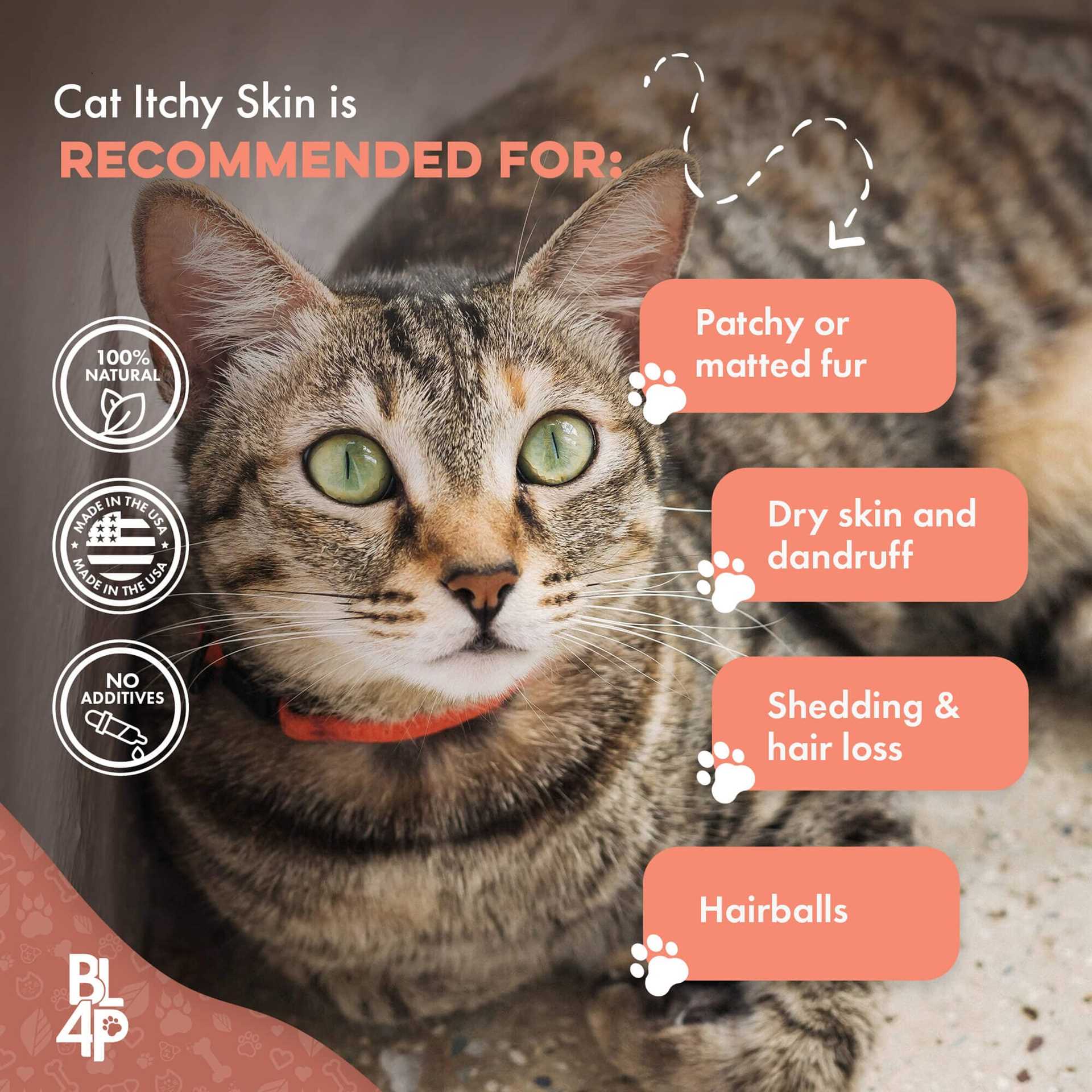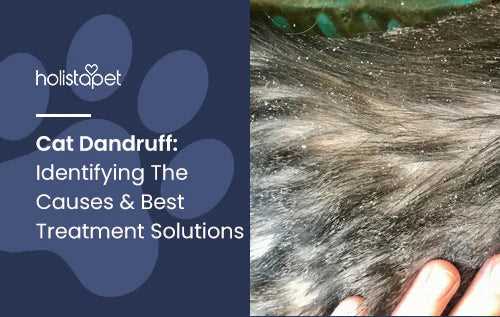First things first, ensure a proper diet rich in omega-3 and omega-6 fatty acids. Foods containing these nutrients can significantly improve coat health and hydration. Look for high-quality options that list fish oil or flaxseed oil among the top ingredients.
Regular grooming is key. Use a gentle brush to remove dead hair and distribute natural oils throughout the coat. This not only helps with moisture retention but also keeps your pal comfortable and looking sharp.
Hydration plays a vital role too. Encourage drinking by providing fresh water daily and considering a cat water fountain. Cats often prefer running water, which might entice them to hydrate more effectively.
Monitor the environment. Dry air can exacerbate issues, so using a humidifier during colder months can create a more comfortable atmosphere. Additionally, avoid frequent baths, as they can strip away natural oils, leading to more irritation.
If you notice persistent issues, consulting a vet is a wise move. They can recommend specific treatments or products to address underlying causes and ensure your companion stays happy and healthy.
Tips for Managing Flaky Fur
First, ensure a balanced diet rich in omega-3 and omega-6 fatty acids. These nutrients help maintain a healthy coat and hydrate from within. Look for high-quality kibble or wet food that lists fish or flaxseed oil among the top ingredients.
Regular grooming plays a significant role. Use a soft brush to remove dead hair and distribute natural oils throughout the fur. This practice not only helps to keep the coat shiny but also stimulates the skin, promoting better hydration.
| Grooming Frequency | Recommended Tools |
|---|---|
| Short-hair breeds: 1-2 times a week | Soft bristle brush |
| Long-hair breeds: 3-4 times a week | Wide-toothed comb |
Hydration is key. Always provide fresh water, and consider adding wet food to the diet for extra moisture. If water intake is low, try a pet water fountain to encourage drinking.
Environmental factors can contribute to discomfort. Maintain a humid atmosphere during dry seasons. A humidifier can help keep the air moist, benefiting both the fur and overall comfort.
Regular vet check-ups are crucial. Conditions like allergies or parasites can cause irritations that may lead to flaky fur. Discuss any unusual symptoms with the vet to rule out underlying health issues.
Topical treatments can offer relief. Look for natural oils or moisturizing sprays specifically designed for feline care. Apply these as directed, focusing on affected areas.
Monitor for signs of stress or anxiety, which can also impact coat health. Provide a calm environment with plenty of play opportunities to keep spirits high.
Identify the Symptoms of Dry Skin in Cats
Itching and scratching are often the first signs that something is off. If I start to paw at my fur more than usual, it’s a red flag. Pay attention to areas where I seem to focus my efforts; those spots might be particularly uncomfortable.
You might notice flakes or dry patches on my coat. These can be small white specks or larger areas where the fur looks less shiny and more dull. Sometimes, you might even see redness or irritation in those affected areas.
If I’m grooming more than normal, it could indicate discomfort. Excessive licking can lead to bald patches or skin that appears raw. Keep an eye out for areas where my fur is thinning.
Changes in behavior may also signal issues. If I become more withdrawn or irritable, it could stem from irritation. A sudden shift in my usual demeanor is worth investigating.
Watch for excessive shedding, too. If my fur starts to come out more easily, it might be a sign that my coat isn’t healthy. You may find more fur around the house than usual.
Finally, if you notice any unusual odors, that could indicate an underlying issue. Skin affected by dryness may develop infections, leading to unpleasant smells.
Evaluate Your Feline’s Diet for Nutritional Deficiencies

Assessing what I consume is a priority. A balanced meal influences my fur quality and overall well-being. Here are some specific nutrients to check:
- Omega-3 Fatty Acids: Essential for maintaining moisture. Look for fish oil or flaxseed oil in my food.
- Proteins: High-quality protein sources like chicken or fish support healthy fur growth. Ensure my meals list meat as the first ingredient.
- Vitamins: Vitamins E and A play a key role in skin health. Check that my diet includes fresh vegetables or supplements.
- Minerals: Zinc and selenium contribute to skin integrity. A balanced commercial diet usually covers these needs, but it can vary.
Regularly consulting with a vet helps to tailor my meals to my specific requirements, particularly if deficiencies are suspected. Supplements can be beneficial, but always confirm their appropriateness for my health.
Lastly, hydration is crucial. Fresh water should always be available to help maintain moisture levels in my coat. If I seem disinterested in drinking, consider incorporating wet food into my diet.
Choose the Right Moisturizing Products for Cats
Opt for natural oils like coconut or olive oil. They are safe and provide hydration without harmful additives. Just a small amount applied to areas needing moisture can make a difference.
Look for Specialized Formulations
Products specifically designed for felines are ideal. These often contain ingredients that enhance moisture retention. Avoid human lotions, as they may contain chemicals that irritate sensitive fur and dermis.
Check Ingredients Carefully
Avoid any product with artificial fragrances or harsh chemicals. Look for soothing agents like aloe vera or chamomile. These can help calm irritation while providing hydration. Always perform a patch test first to ensure there are no adverse reactions.
Establish a Regular Grooming Routine
Daily brushing is crucial for maintaining my coat’s health. It helps remove loose hairs and prevents matting, especially in areas prone to dryness. I find that using a soft-bristle brush works wonders, as it’s gentle on my fur while stimulating the skin. Aim for at least 10-15 minutes each day.
Monitor Hydration

Incorporate regular water intake into your care routine. Fresh, clean water should always be available. Consider using a fountain, as moving water tends to attract more attention and encourages hydration. Proper moisture levels in my body contribute significantly to overall fur condition.
Evaluate Frequency
Adjust the grooming frequency based on my needs and the season. During shedding periods, increase brushing sessions to manage loose fur effectively. If I seem to have more flakes or rough patches, more frequent grooming can help alleviate discomfort and promote a healthier appearance.
Improve Your Home’s Humidity Levels
Maintaining an optimal humidity level in my living space significantly enhances comfort. A humidity range of 30-50% is ideal for overall well-being. To achieve this, consider the following methods:
- Invest in a humidifier. Choose one that suits your room size. Regular maintenance ensures it runs efficiently.
- Place water basins near heat sources. As the water evaporates, it adds moisture to the air.
- Incorporate indoor plants. They naturally release moisture through transpiration, improving air quality.
- Keep the bathroom door open while showering. This allows steam to circulate throughout the home.
- Avoid excessive heating. If using radiators, try placing a wet towel on them to add moisture.
Monitor Humidity Levels
Utilize a hygrometer to keep track of humidity. This device provides real-time readings, helping to adjust methods as needed. If levels drop below 30%, it’s time to reassess your strategies.
Seasonal Adjustments
During winter, indoor air often becomes drier. Increase humidity by implementing more water sources and adjusting heating practices. In summer, ensure ventilation to prevent excessive moisture accumulation.
Consult a Veterinarian for Persistent Issues
Seeking professional help is vital if discomfort lasts beyond basic home care. A vet can provide a thorough examination to determine underlying problems, such as allergies, parasites, or infections, that may contribute to the issue.
During the visit, be prepared to share specific details about symptoms, changes in behavior, and any products you’ve used. Accurate information helps in diagnosing the condition effectively.
Follow the veterinarian’s recommendations closely, which may include prescribed treatments or specific dietary changes to enhance overall well-being. If your furry friend requires medication, adhere to the dosage guidelines provided.
Don’t hesitate to ask about additional options or alternative therapies. Building a strong relationship with your vet can lead to better outcomes for your furry companion.
For those moments when outdoor playtime is needed, investing in equipment like a best petrol pressure washer usa can help keep the outdoor environment clean and safe for exploration.
Monitor and Adjust Treatment Based on Your Feline’s Response
Regularly observe changes in your furry friend’s condition after introducing new products or routines. If you notice improvements like reduced itching or healthier-looking fur, continue with the current plan. However, if symptoms persist or worsen, it’s time to rethink your approach.
Track Progress
Keeping a journal can be beneficial. Document daily observations, including any changes in behavior, fur texture, or signs of irritation. This record will provide valuable insights for adjustments and discussions with a veterinarian.
Adjust as Needed
Consider altering moisturizing products based on your observations. If a specific item doesn’t seem to be effective, explore alternatives. Some options might include natural oils like coconut or specialized feline moisturizers. If your companion shows signs of allergic reactions, discontinue use immediately.
In addition, ensure you maintain a balanced diet that supports skin health. If you find your buddy’s coat still lacks luster, it may be time to explore supplements rich in omega fatty acids. These can enhance hydration from within.
Always remember to keep a close eye on environmental factors as well. If humidity levels fluctuate, adjusting your home’s moisture levels can make a significant difference. A humidifier, especially during dry seasons, can be a great addition.
For those long trips in the car, check out the best car seat for cats to ensure a comfortable journey. Stress can also affect skin health, so keeping experiences pleasant is key.
FAQ:
What are the common causes of dry skin in cats?
Dry skin in cats can result from a variety of factors. One of the most common causes is environmental conditions, such as low humidity or exposure to harsh weather. Allergies to food, fleas, or environmental elements can also lead to skin dryness. Nutritional deficiencies, particularly a lack of essential fatty acids, may contribute to this issue as well. Additionally, underlying health conditions like hypothyroidism or certain skin diseases can cause dryness. It’s important to observe your cat’s overall health and consult a veterinarian if you notice persistent dry skin.
How can I help my cat with dry skin at home?
There are several ways to assist your cat with dry skin at home. First, ensure that your cat’s diet includes high-quality food rich in omega-3 and omega-6 fatty acids, which are beneficial for skin health. You might also consider adding a fish oil supplement, but it’s wise to consult your vet before doing so. Regular grooming helps remove dead skin and distribute natural oils, so brushing your cat can be beneficial. Additionally, providing a humidifier in your home can help maintain moisture in the air, especially during dry seasons. If the problem persists or worsens, it’s advisable to seek veterinary advice to rule out any underlying health issues.






